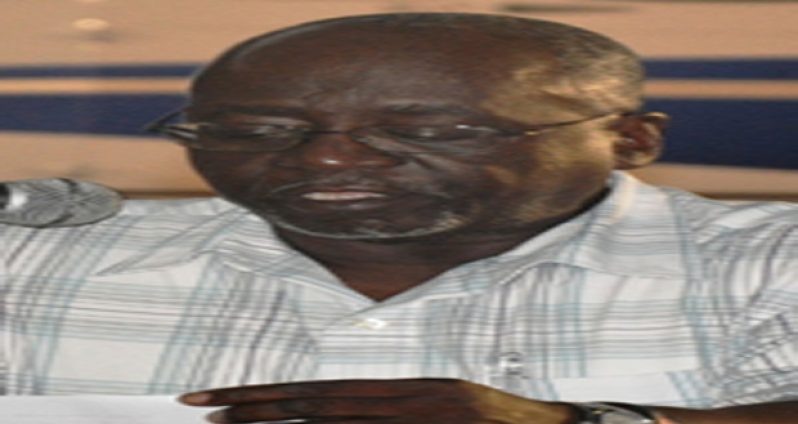TO achieve a Category One status under the U.S. Federal Aviation Administration (FAA), Guyana must first demonstrate political will, says former President of the Guyana Civil Aviation Authority (GCAA) Hugh Denbow.In an interview with this publication, Denbow said without political will the aviation sector will remain in bad shape. He said over the years there has been “a lack of political will to achieve what the International Civil Aviation Organisation (ICAO) is requesting.”
While it is a costly exercise, more effort must be made to ensure that Guyana is compliant. “It is costly! It is not a walk in the park,” he said, while pointing out that obtaining Category One status is good but maintaining it is critical.
“You don’t only have to achieve compliance; you have to maintain it because this month you can get a Category One rating but next month, you can move down,” Denbow explained.
According to Denbow, the lack of knowledge by Guyanese at all levels of the aviation sector and what it takes to ensure that the sector is progressive is beyond comprehension. “We need trained and experienced staff…you need to demonstrate that will to maintain whatever you achieve. It is amazing that a lot of people in Guyana do not understand Civil Aviation,” said the former GCAA chairman.
With 42 years experience in the aviation sector, Denbow believes much more can be done. He said the ICAO has highlighted areas that Guyana must improve on before being deemed compliant, but to date that has not been done.
There are many limitations to Guyana attaining Category One status under the U.S. FAA ranking. Many of those limitations have been highlighted through both the ICAO and the FAA.
NEGLIGENT
“Guyana has been negligent for many reasons in terms of conforming or being in compliance with the standards. This is my personal view. Guyana is one country found to have given low priority to aviation.”
Guyana, he explained, as a member of the ICAO is contractually bound to enact legislation and regulations aimed at establishing systems and procedures for the effective monitoring and control of registered and licensed air operators here. The established systems are required to meet the minimum standards of the ICAO.
NOT RATED
Many have opined that Guyana is currently a Category Two country as it is non-compliant with the minimum requirements, but Denbow said that Guyana at the moment has no ranking. “The U.S. has knocked out the Category 2…you either comply or don’t — currently Guyana is not rated because an assessment has not been conducted of Guyana recently.”
In 1990, following the crash of an Avianca Airlines Boeing B707 aircraft at the John F. Kennedy International Airport (JFK) in New York, the U.S. Federal Aviation Administration (FAA) established an International Aviation Safety Assessment (IASA) rating system aimed at determining whether countries whose airlines operate in the U.S. comply with the ICAO standards.
Countries that have been deemed Category One countries are those that have complied with the ICAO standards. The FAA would have assessed the country’s Civil Aviation Authority and found it capable to license and oversee air carriers in accordance with the ICAO aviation safety standards. Category Two countries on the other hand refer to countries that do not comply with the ICAO standards. What it means is that upon assessment by the FAA, it was discovered that the country is incapable of carrying out regulatory responsibilities in accordance with the minimum safety standards.
Given that Guyana has been deemed a Category Two country, it means the country lacks the requisite laws and regulations needed to support certification and oversight of air carriers in accordance with ICAO standards; the Guyana Civil Aviation Authority (GCAA) lacks the technical expertise, resources and organisation to license or oversee air-carrier operations; the GCAA lacks adequately trained and qualified technical personnel; does not provide sufficient inspector guidance to ensure the enforcement and compliance with minimum ICAO standards; GCAA has insufficient documentation and records of certification and the resources for the resolution of safety concerns.
TRAIN PERSONNEL
Denbow stressed the need for the Civil Aviation industry to be staffed by knowledgeable persons. He said “Civil Aviation in Guyana has always been staffed by air traffic controllers — there was the concept that you had to be an air traffic controller to manage or run civil aviation in Guyana and which has turned around to haunt the development of aviation in Guyana.”
He explained that air traffic controllers represent only a small aspect of the civil aviation sector. “It is not even part of the heart of Civil Aviation…it is a service provider,” said Denbow, who noted that there are persons who hold senior positions in the sector that have never received the requisite training.
“There are people who started out as air traffic controllers who have reached the height of director, director general, but have never been exposed or trained in the management of civil aviation,” he added.
Denbow said he has observed over the years that there are “no efforts to train a group of people to take up the role of managing and developing civil aviation in Guyana. I worked with Guyana Airways Corporation (GAC) but when asked to go on the board of GCAA in 2012 or thereabout, it was amazing to find that there were people at high levels that had no exposure and have never even been qualified in the area…just air traffic controllers. Nobody!”
He believes that an assessment needs to be done to ensure that those who hold senior positions in the sector are qualified and adequately trained. But while he thinks the assessment would be a good start he feels it would be resisted.
“The first step is to do an assessment, but you’d get a lot of resistance…as you know the Civil Aviation [Authority] until 2000 was part of the Public Service and are promoted based on seniority…so right now at the GCAA, the bright people, the qualified people are at the bottom of the ladder, but they cannot surpass those [above], because they still have the public service mentality.”
LEGISLATION
As part of the ICAO, FAA recommendation it is critical for Guyana to update its legislation, a task Denbow says has begun. He explained that the GCAA is working with ICAO on the revision of the civil aviation laws.
Denbow explained that prior to independence, Guyana’s aviation was controlled by the British and the Overseas Colonial Air Navigation Act. “When we became independent in 1966, one of the things we should have done is enact Guyana’s own legislation. But this was not done until 1996, some 30 years after.”
He said the 1996 legislation was short-lived because in 2000 a new Act was passed in Parliament. “This Act enables regulations to govern various aspects of civil aviation operations in Guyana. They were very slow in terms of developing the regulations and when they did they were not sufficient to regulate what was taking place in Guyana,” said Denbow.
Guyana, he said, is “unique in terms of its aviation operations,” noting that the situation in Guyana with respect to operations is similar to that of Canada, Australia, India and Nigeria. “Those countries have large domestic territories. Take for instance, Jamaica, Trinidad, Barbados they don’t have. In Guyana, we have a large hinterland. What is still needed is regulation to govern that type of operation.”
There is a debate, he said, on whether legislation should deal collectively or separately with domestic and international operations. “It is lacking in terms of domestic regulations,” he stated.
ICAO regulates civil aviation worldwide and has 19 annexes which are referred to as standards that must be complied with.
The annexes speak to personnel licensing, rules of the air, meteorological service for international air navigation, aeronautical charts, units of measurement to be used in air and ground operations, international commercial air transport, aircraft nationality and registration marks, etc.
The annexes also speak to airworthiness of aircraft, facilitation, radio navigation aids, communications procedures, communications systems, surveillance radar and collision avoidance systems, aeronautical radio frequency spectrum utilisation, air traffic services, search and rescue, aircraft accident and incident investigation, aerodrome design and construction, heliports, aeronautical information services, environmental protection – aircraft noise, environmental protection – aircraft engine emissions, the safe transport of dangerous goods by air and air traffic management (PANS-ATM).
By Ariana Gordon



.jpg)












